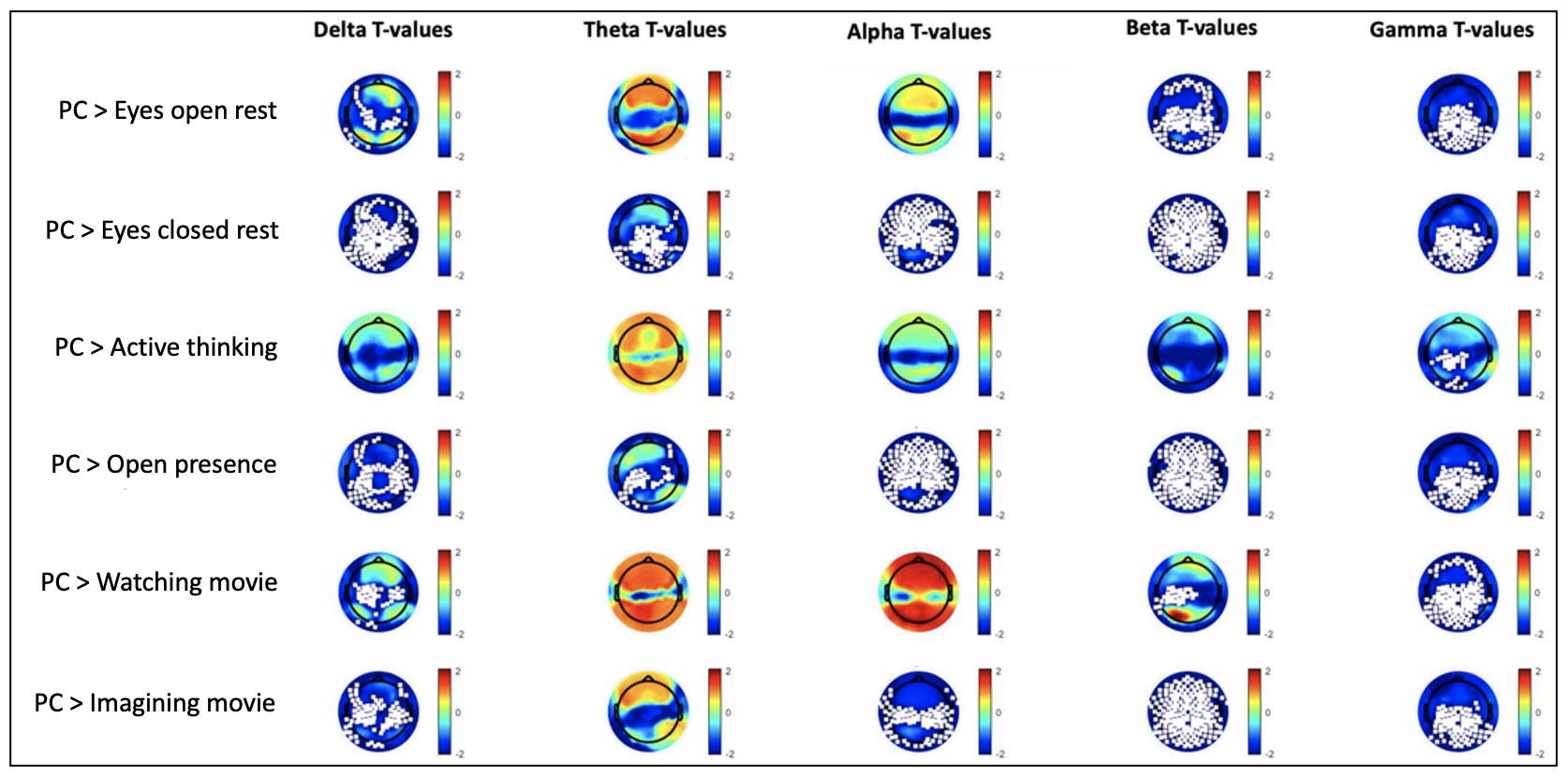Establish That Human Consciousness Can Be Vividly Present While Most Neurons Within the Physical Substrate of Consciousness Are Firing at Low Background Levels: Neural Correlates of Pure Consciousness
Overview:
This project aims to determine whether vivid conscious awareness can exist even when most brain activity is minimal, by studying the unique brain patterns of experienced meditators in states of pure consciousness without thoughts, self, or sensory input.
Abstract:
Modern society encourages a continual pursuit of outward accomplishments. While an engaging work and social rewards are important for a fulfilling life, relentless activity with an over-attachment to outer circumstances may generate feelings of insecurity and psychological distress, placing individuals at higher risk of anxiety and depression.
The strong outward emphasis of modern society is in sharp contrast with centuries-old spiritual traditions that emphasize the cultivation of fulfilling states of being, rather than doing, as a reliable source of long-term wellbeing. Buddhist traditions in particular highlight the benefits of practices that cultivate states of “pure consciousness” (PC)—in which awareness is vividly present but devoid of any self, thoughts or perceptual contents. Although PC has recently triggered neuroscientific interest as a way to gain insight into the mechanisms of human consciousness, its neural signatures have not yet been identified. The present project aims to characterize brain activity patterns specific to PC states in long-term meditators (LTMs), as a first step towards the goal of fostering PC states and improve wellbeing in meditation-naïve subjects (MNSs).
Previous roadblocks to PC research have been that PC states can only be reliably achieved by a small number of LTMs and that neuroimaging tools such as functional MRI are not conducive to deep absorption states. In the context of the present project, we have developed an experimental paradigm allowing us to capture stable PC states with 256-electrode high-density EEG (HDEEG) in LTMs in closed-retreat settings. Our preliminary results suggest a common neural signature for PC states across both types of practice, with consistent decreases in EEG gamma activity in PC states compared to mind wandering during meditation as well as a number of other control conditions (movie watching, re-imagining the same movie, active thinking, open presence, eyes open and eyes closed). Interestingly, this decrease in EEG gamma activity was most consistently found in posterior brain regions, which are thought to be especially important for consciousness.
Ongoing research seeks to confirm and extend our preliminary findings in a larger cohort of LTMs of different traditions both during retreats and in laboratory settings. We also aim to assess whether PC states also occur in MNSs, which would indicate the possibility of using neurofeedback methods to further enhance PC states and increase well-being in MNSs. Based on theoretical considerations, we had hypothesized that, states of pure consciousness, in which experience is vividly present but there are no thoughts, self, and sensory percepts, most neurons within the neuronal substrate of consciousness would be inactive or firing at low background levels. If this counterintuitive hypothesis of vivid consciousness and minimal neural activity is confirmed, it would have crucial implications for our understanding of the nature of consciousness.

Broader Impact:
Pure consciousness is a unique state in which there is an absence of thoughts, self, and sensory percepts and yet there is still a preserved vivid sense of presence. Capturing brain activity patterns during this special state of being allows to study consciousness ‘naked’. A better understanding of the neurophysiology of such as state is likely to lead to powerful constraints on a neuroscientific explanation of consciousness. It could also pave the way towards new neuromodulation approaches to induce transformative experiences about the impermanence of the self and/or the dream-like nature of reality in meditation naïve subjects.